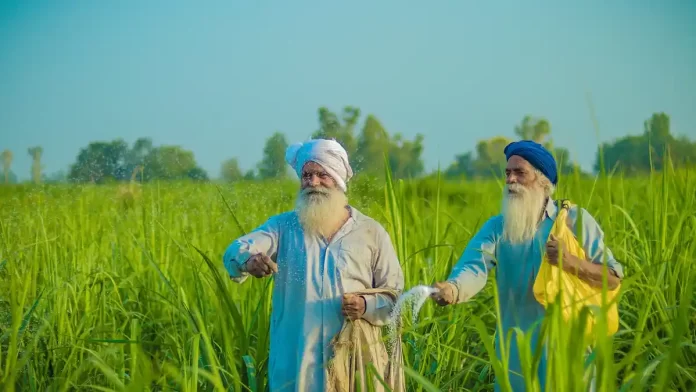Agriculture plays a crucial role in feeding the world’s growing population. However, it is also a significant contributor to greenhouse gas emissions, which exacerbates climate change.
While livestock farming often takes the spotlight, crops themselves can also emit greenhouse gases (GHGs) during their growth and cultivation processes.
In this article, we will explore some of the key crops that contribute to GHG emissions and discuss potential mitigation strategies.
Rice (Oryza sativa)
Rice is a staple food for over half of the global population, especially in Asian countries. However, it is also a notable emitter of methane (CH4), a potent greenhouse gas.
Methane is produced in rice paddies due to the anaerobic conditions in waterlogged soil.
During this process, microbes known as methanogens break down organic matter, producing methane as a byproduct.
According to estimates, rice cultivation is responsible for nearly 20% of global methane emissions.
Corn (Zea mays)
Corn, also known as maize, is a widely grown cereal crop globally and serves as a vital source of food, animal feed, and industrial products.
While it is not a direct methane emitter like rice, corn crops contribute to GHG emissions through the intensive use of nitrogen-based fertilizers.
The application of nitrogen fertilizers leads to the release of nitrous oxide (N2O), another potent greenhouse gas. Nitrous oxide is about 300 times more potent than carbon dioxide (CO2) in terms of its warming potential.
Wheat (Triticum spp.)
Wheat is one of the most cultivated crops globally, forming a significant part of the human diet. Similar to corn, wheat cultivation relies heavily on nitrogen fertilizers, leading to nitrous oxide emissions.
Additionally, the burning of crop residues after harvest releases carbon dioxide into the atmosphere, further contributing to its climate impact.
Peatland-based crops
Peatlands, which are organic-rich wetlands, are significant reservoirs of carbon.
However, when drained for agricultural purposes, these peatlands release massive amounts of stored carbon as carbon dioxide.
Crops such as oil palm, which are grown on drained peatlands, contribute substantially to CO2 emissions.
Other crops like sugarcane and soybeans also contribute to peatland destruction and associated emissions.
Soybeans (Glycine max)
Soybean is a versatile crop used as a source of protein for both human and animal consumption.
The production of soybeans, however, has been linked to deforestation, especially in the Amazon rainforest and other regions in South America.
Deforestation releases vast amounts of carbon dioxide into the atmosphere and reduces the planet’s capacity to absorb carbon emissions.
Palm oil (Elaeis guineensis)
Palm oil is widely used in the food, cosmetics, and biofuel industries due to its high yield and versatility.
However, large-scale palm oil plantations often replace tropical rainforests, leading to significant carbon emissions.
The destruction of these forests releases stored carbon and diminishes vital carbon sinks that play a role in regulating the Earth’s climate.
Livestock feed crops
While livestock farming itself is a major contributor to GHG emissions, the cultivation of crops for animal feed also adds to the overall impact.
Crops like soybeans, corn, and alfalfa require large amounts of fertilizers, which result in the release of nitrous oxide.
Additionally, the land-use change associated with expanding feed crop production can lead to deforestation and increased carbon dioxide emissions.
Mitigation Strategies
Reducing greenhouse gas emissions from crop cultivation is essential to combat climate change. Several strategies can be employed to mitigate the impact of these emissions:
- Improved rice cultivation techniques: Implementing alternate wetting and drying (AWD) or aerobic rice cultivation can significantly reduce methane emissions from rice paddies.
- Precision agriculture: Adopting precision farming techniques can help optimize fertilizer use, reducing nitrous oxide emissions.
- Sustainable land-use practices: Promoting responsible land-use practices, such as avoiding deforestation and peatland drainage, can help preserve carbon sinks and reduce emissions.
- Crop diversification: Encouraging crop diversification can reduce the overreliance on single crops and decrease the overall environmental impact.
- Organic farming: Transitioning to organic farming practices can reduce the use of synthetic fertilizers and pesticides, leading to lower GHG emissions.
Conclusion
As the world faces the challenges of climate change, understanding the role of agriculture and crops in greenhouse gas emissions becomes crucial.
While crops emit GHGs during cultivation, adopting sustainable agricultural practices can help mitigate their impact.
By implementing innovative techniques and promoting responsible land-use practices, we can work towards a more sustainable future, ensuring food security without compromising the health of our planet.
